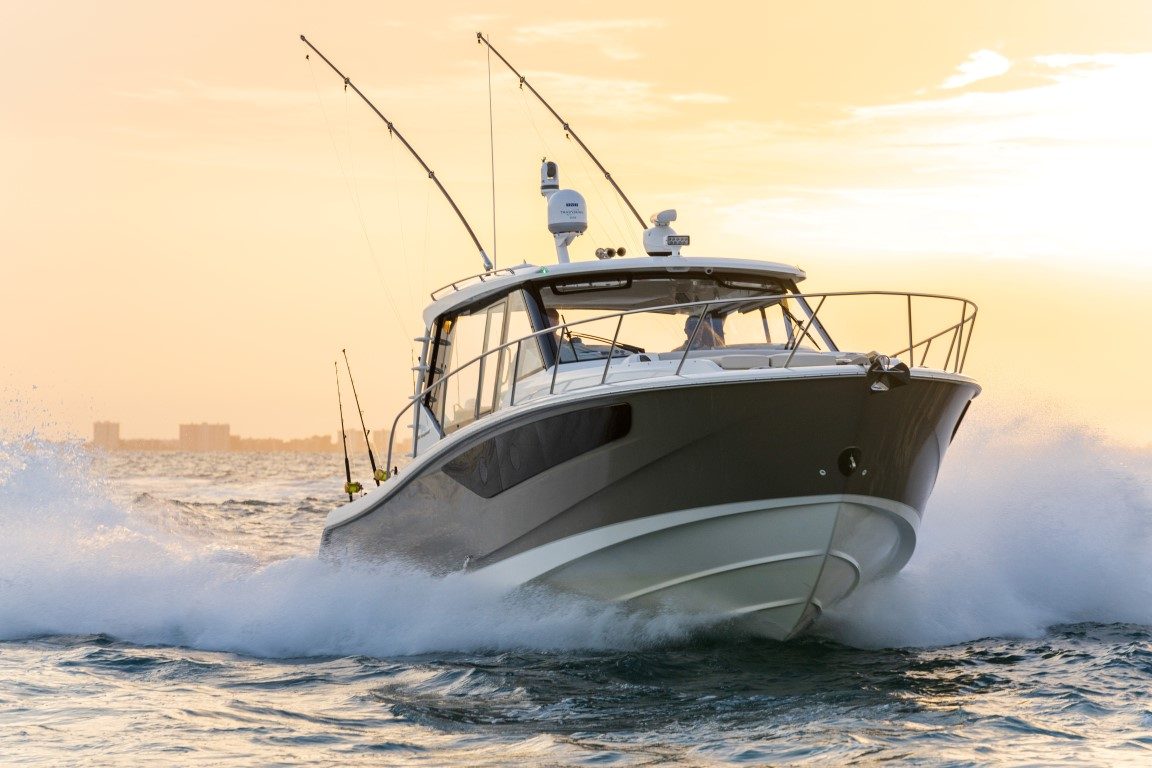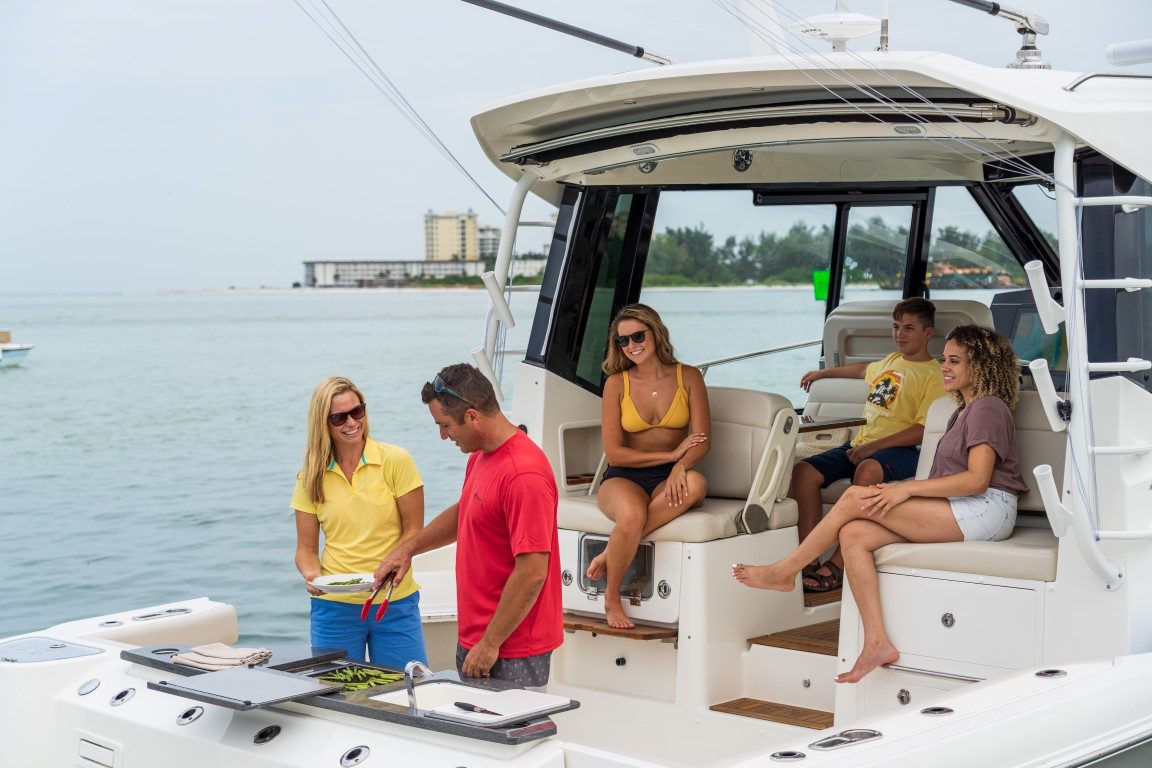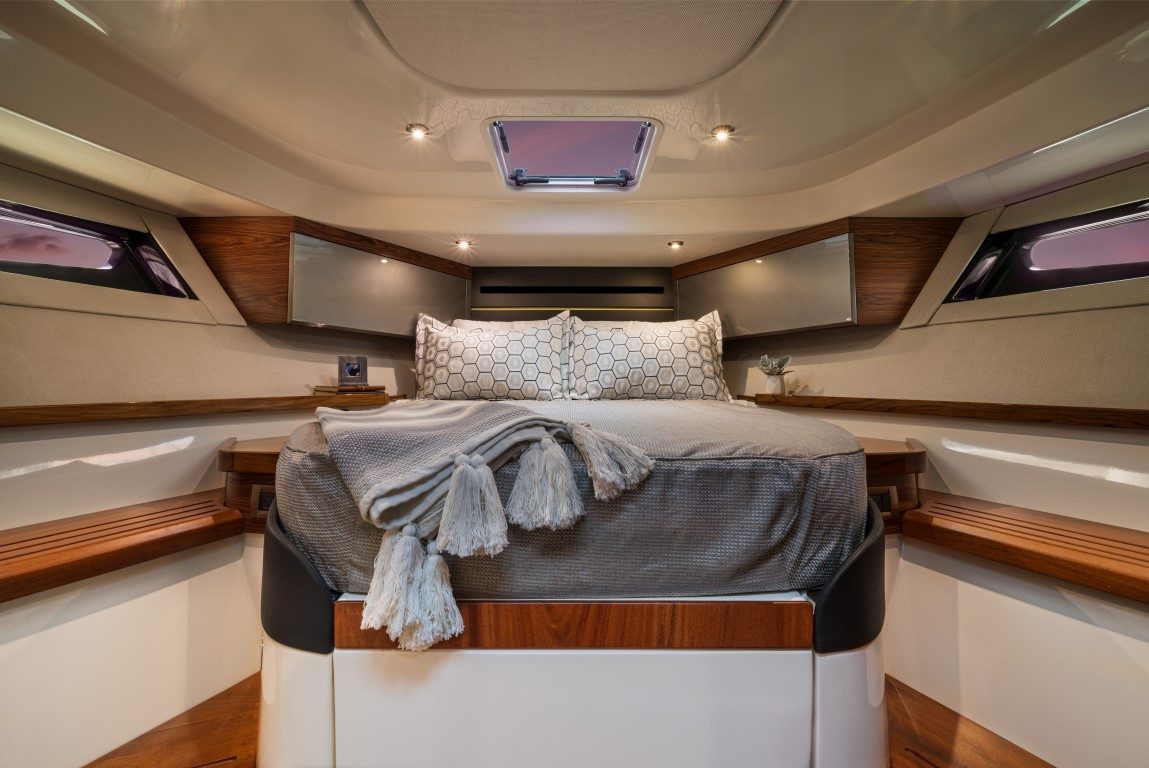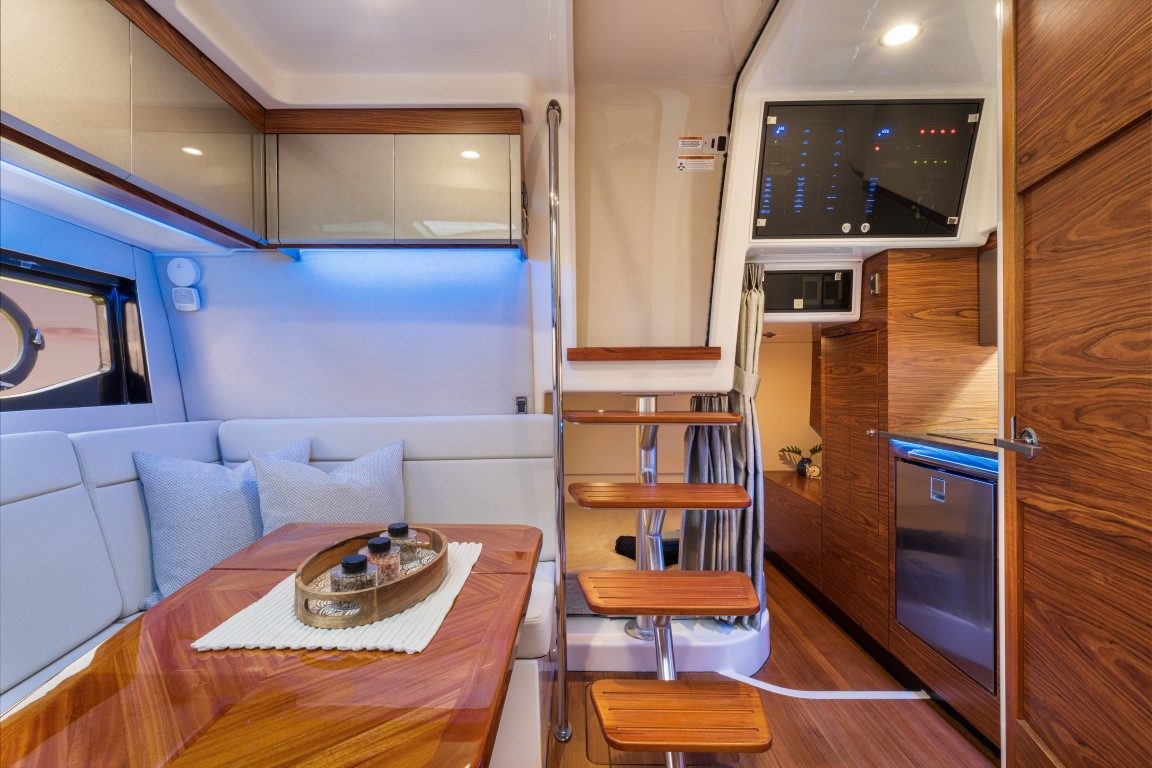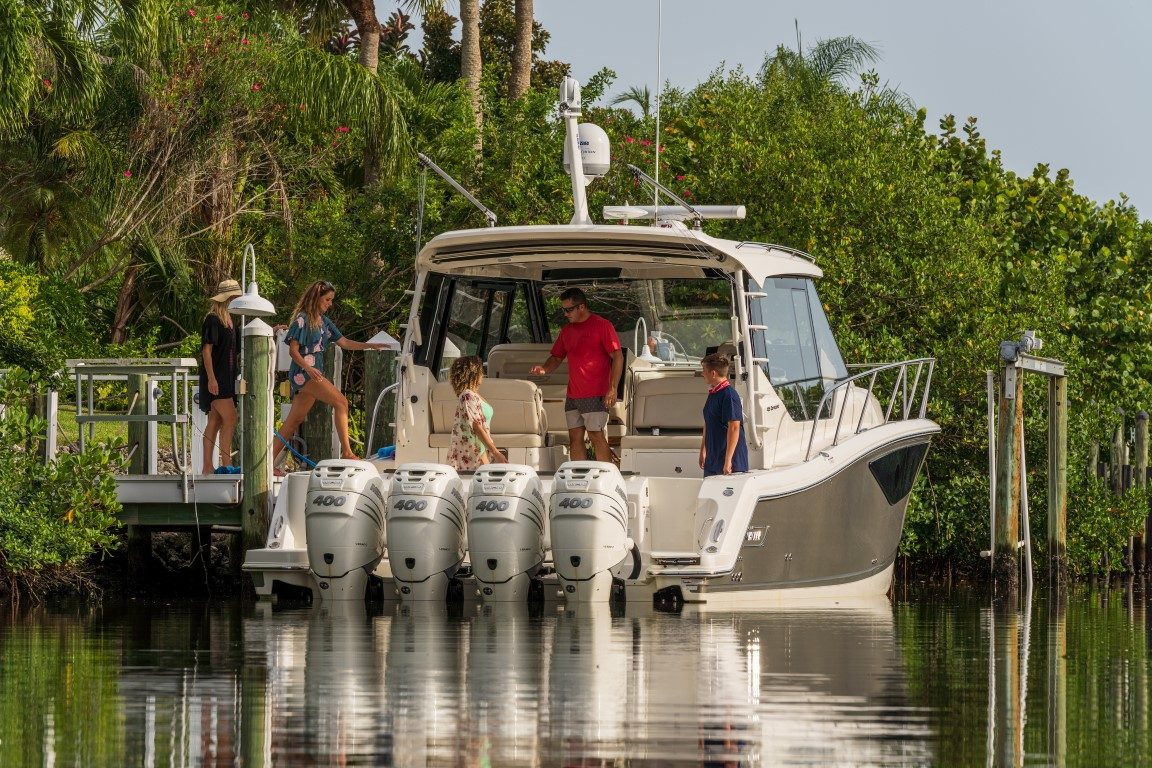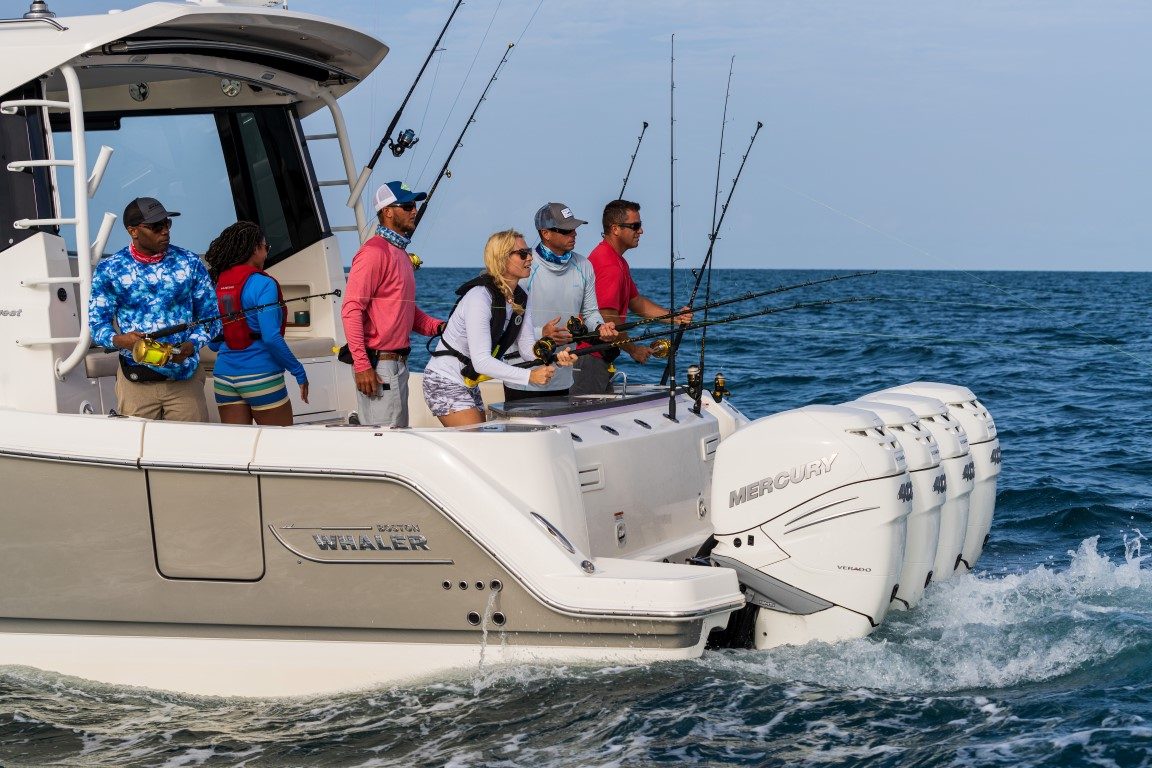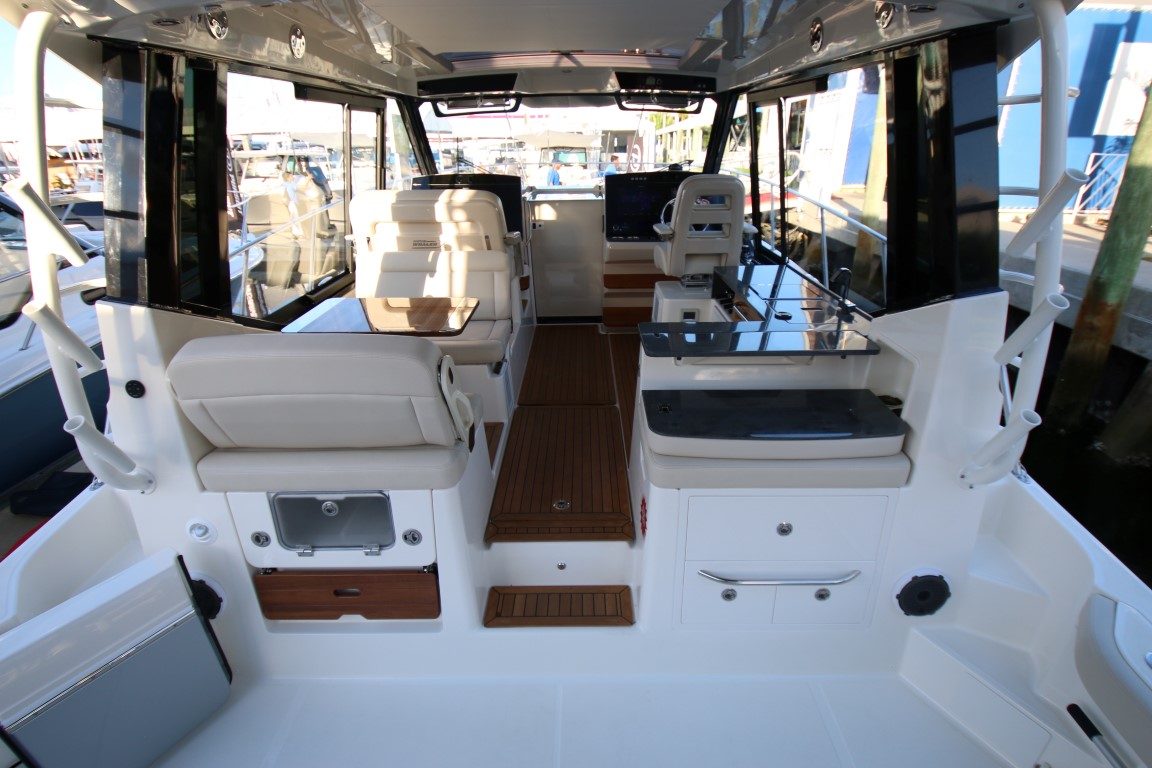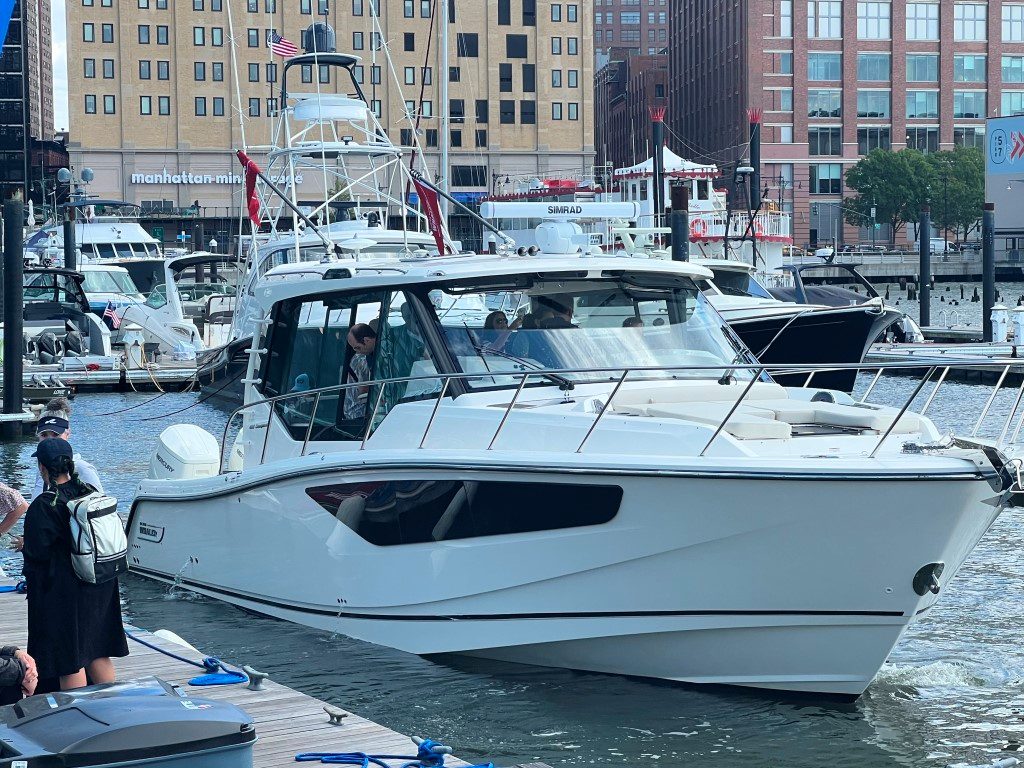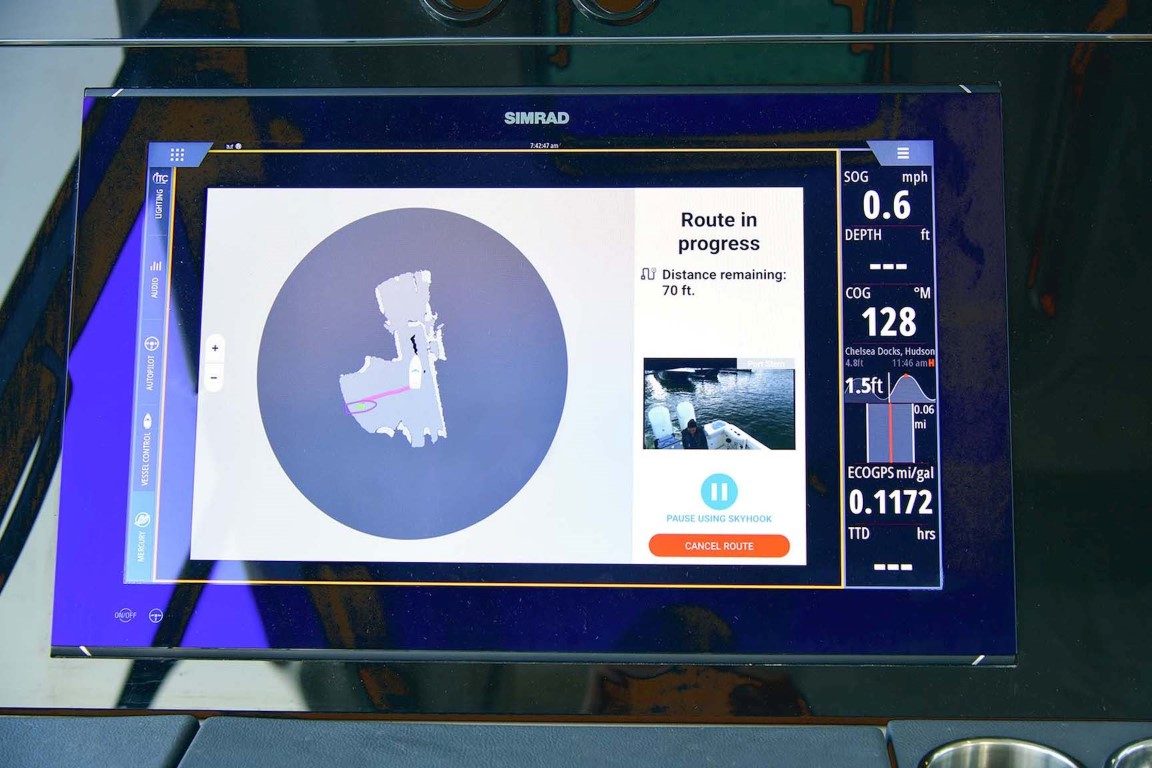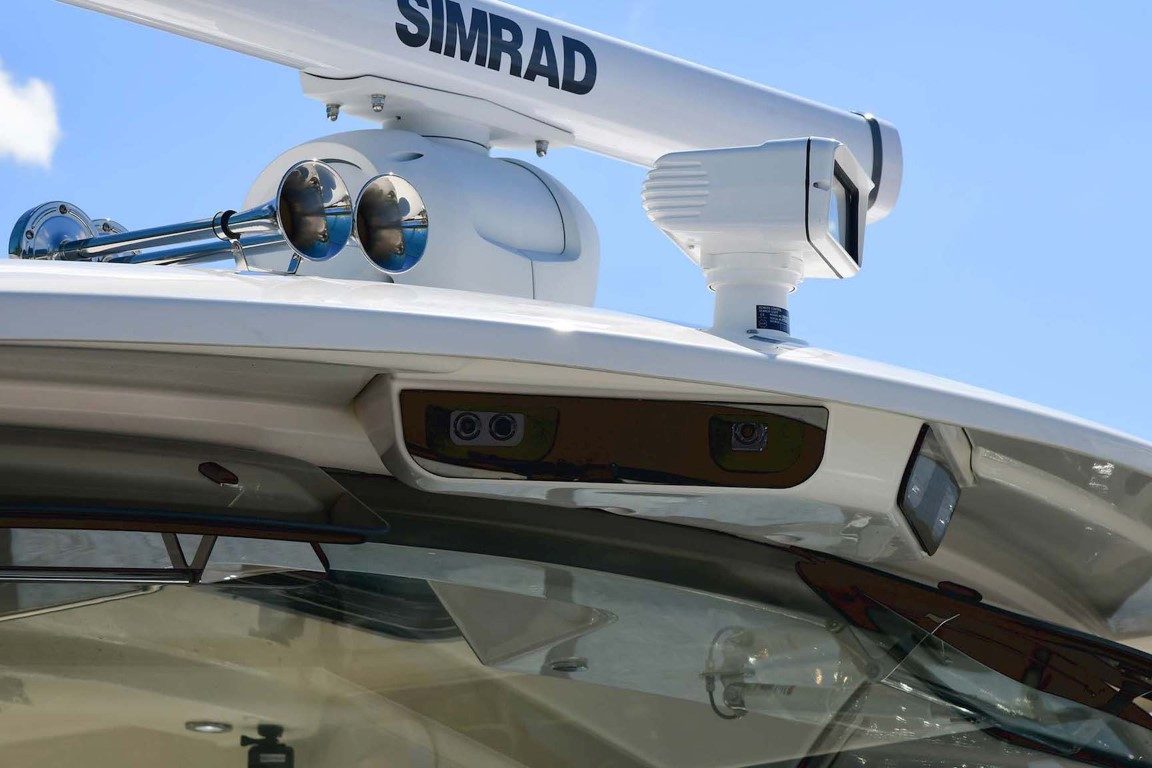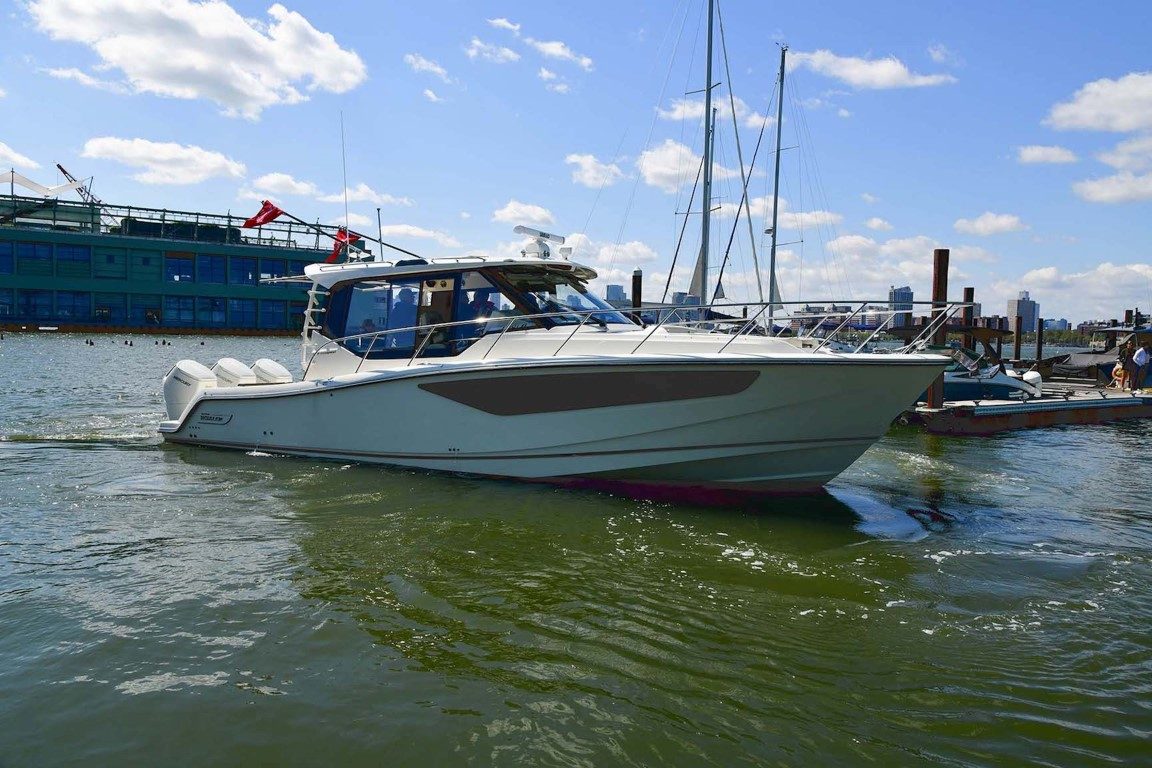‘Behemoth’ is a word which springs to mind or, perhaps more nautically, ‘leviathan’.
- Heaps of power on tap
- Legendary build quality, tough and supremely capable
- Near-perfect balance between sportfisher and family cruiser
- Self-docking feature is highly impressive – when offered in 2025, it will make a great boat even better

